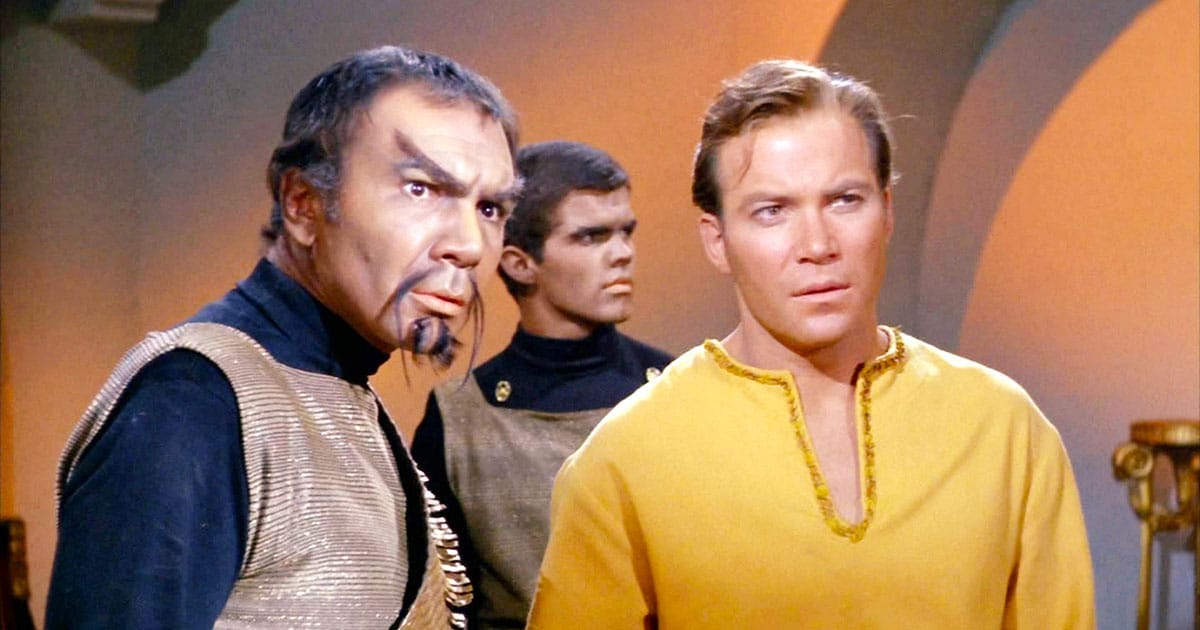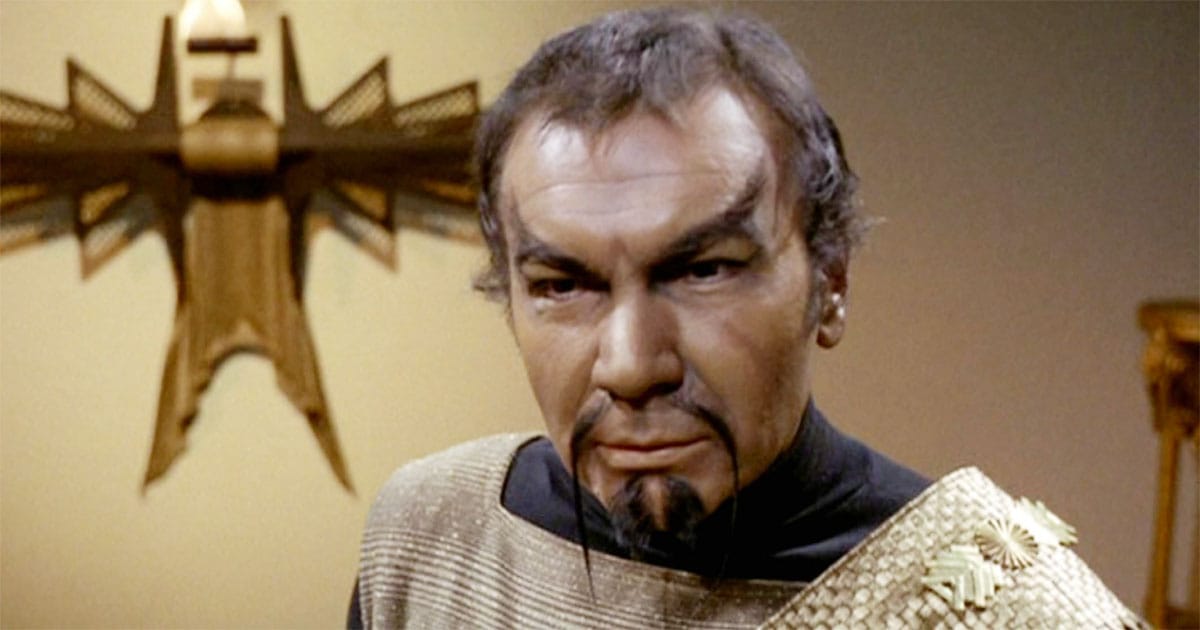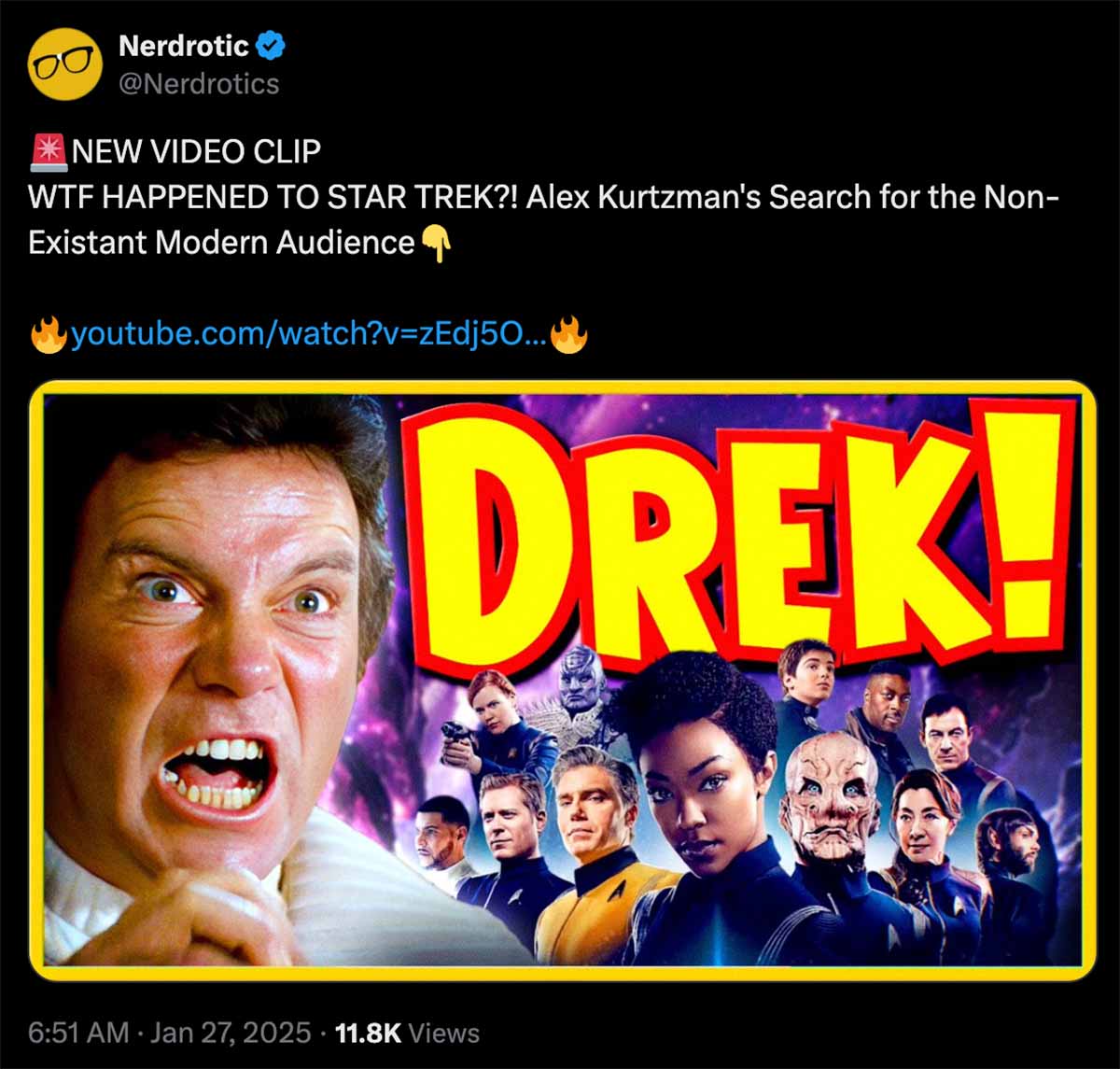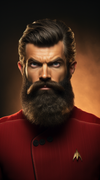From “Errand of Mercy” to a Cultural Icon
Explore the first appearance of the Klingons in "Errand of Mercy," their evolution in "Star Trek," and why Alex Kurtzman's controversial changes to the franchise have left fans divided.

The Klingons are one of the most enduring alien races in science fiction, representing both the best and worst aspects of humanity through their warrior ethos and complex culture. But before they became the honor-bound, ridged-forehead warriors of the later "Star Trek" series, they first appeared as cunning and ruthless antagonists in the "Star Trek: The Original Series" episode "Errand of Mercy," which aired on March 23, 1967.
The Episode: "Errand of Mercy"
Set against the backdrop of an impending war between the United Federation of Planets and the Klingon Empire, "Errand of Mercy" sees the crew of the USS "Enterprise" dispatched to Organia, a strategically important but seemingly primitive planet. Captain Kirk and Mr. Spock arrive to find a pacifistic society led by Ayelborne (John Abbott), who refuses to take sides in the conflict.
The Klingons, led by the cold and calculating Kor (played masterfully by John Colicos), quickly occupy the planet. Kirk and Spock go undercover to inspire resistance, but their efforts are thwarted when the Organians reveal their true nature. Specifically, they are advanced, non-corporeal beings who have no use for war.
In a dramatic twist, the Organians impose a truce between the Federation and the Klingons, forcing peace upon both sides and delivering a pointed commentary on the futility of violence during the height of the Cold War.
| Role | Actor | Notes |
|---|---|---|
| Kor | John Colicos | The Klingon commander and central antagonist. |
| Klingon Lieutenant | Victor Lundin | Kor’s subordinate officer. |
| Klingon Soldier | George Sawaya | Appears in background scenes. |
| Klingon Guard | Bobby Bass | Plays a guard in several scenes. |
| Klingon Guard | Gary Combs | Another guard shown during the occupation. |
| Klingon Soldier | Walt Davis | Seen in smaller roles as a soldier. |
Fun Facts About the First Klingons

- Minimalist Makeup. Unlike the elaborate prosthetics of later years, the first Klingons had a relatively simple look, featuring dark makeup and facial hair. Budget constraints shaped their human-like appearance, but the effect effectively conveyed their militaristic and menacing demeanor.
- Inspiration from History. John Colicos suggested the Klingons' look be based on Genghis Khan's Mongol warriors. His portrayal of Kor, blending intellect and cruelty, set the tone for Klingon leaders to come.
- Cast Members. Alongside Colicos, the episode featured Victor Lundin as a Klingon lieutenant and a host of supporting actors, including George Sawaya, Bobby Bass, and Walt Davis, who brought the first wave of Klingon soldiers to life.
Evolution of the Klingons
The Klingons underwent a dramatic transformation over the decades. Initially conceived as a Cold War metaphor for the Soviet Union—aggressive, authoritarian, and expansionist—they were later developed into a rich, multifaceted culture.
By "Star Trek: The Motion Picture" in 1979, the introduction of ridged foreheads and more elaborate costumes marked a turning point in their aesthetic. This redesign, enabled by a larger budget and advances in makeup technology, became the iconic look fans recognize today. With the addition of the Klingon language (developed by linguist Marc Okrand) and cultural practices like bloodwine feasts and honor rituals, the Klingons evolved into a society that explored themes of loyalty, tradition, and identity.
The Klingons in Popular Culture
Few alien races in science fiction have left as lasting a mark as the Klingons. Their warrior ethos resonated with fans, inspiring countless stories, costumes, and an entire constructed language. From their rough beginnings in "Errand of Mercy" to their prominent roles in series like "Star Trek: The Next Generation" and "Deep Space Nine," the Klingons have remained a staple of "Star Trek."
Alex Kurtzman's Klingon Misstep and Broader Criticism
Unfortunately, not every iteration of the Klingons—or "Star Trek" itself—has been well-received.
Under Alex Kurtzman's stewardship, the franchise has faced significant backlash from fans, who feel that his vision has departed from the essence of what made "Star Trek" great. Among these are top-notch influencers like Nerdrotic.

One of the most glaring issues is the redesign of the Klingons in "Star Trek: Discovery." Their appearance became excessively alien, featuring heavy prosthetics and restrictive costumes that hampered the actors' performances.
Critics say the redesign introduced inconsistencies with established Klingon lore, including unexplained biological differences and contradictions in their cultural portrayal. For many fans, these changes made it difficult to reconcile the Discovery Klingons with those from earlier series, leading to widespread dissatisfaction.
If the unhappy fans are correct, the problems with Kurtzman's era extend far beyond Klingon aesthetics since nearly all "Star Trek" fans share a deep dissatisfaction with his broader handling of the franchise.
- Overt Radical Feminism. Critics argue that Kurtzman's "Star Trek" prioritizes political messaging over storytelling, focusing heavily on radical feminism. While "Star Trek" has always been progressive, its earlier iterations balanced social commentary with compelling narratives. Kurtzman's approach, however, is seen as sacrificing nuance in favor of overt messaging, alienating some long-time viewers.
- Deviation from Core Values. Gene Roddenberry's "Star Trek" was built on an optimistic, utopian vision of humanity's future. It celebrated exploration, diplomacy, and hope. Kurtzman's shows, by contrast, have been criticized for their darker tone, dystopian elements, and an overemphasis on conflict and melodrama. Many fans noted that this deviation from the franchise's core values undermines what made "Star Trek" uniquely inspiring.
- Inconsistent Writing and Characterization. The writing quality in Kurtzman-era "Star Trek" has also drawn heavy criticism. Characters often behave in ways that contradict their established personalities, leading to accusations of inconsistent characterization. Plotlines are frequently resolved with convenient solutions or unexplained events, eroding the sense of narrative cohesion.
- Disregard for Established Canon. Perhaps the most egregious complaint is Kurtzman's perceived disregard for "Star Trek" canon. "Star Trek: Discovery," in particular, introduces numerous inconsistencies and contradictions with established timelines and events. From the reimagined Klingons to major plot points that clash with previous series, the show's approach to canon has left fans questioning whether it even belongs in the same universe as earlier "Star Trek" stories.
These issues have caused a schism within the "Star Trek" fanbase, with many feeling that Kurtzman's work is a betrayal of the franchise's legacy. While "Star Trek" has always evolved over time, the changes introduced under Kurtzman are seen by many as an abandonment of the franchise's identity rather than a natural progression.
The TOS is Still Great
The Klingons debuted in "Errand of Mercy" as pragmatic villains with simple makeup and a straightforward mission.
Over the years, they have evolved into one of the richest and most beloved alien cultures in science fiction. Their first appearance remains a pivotal moment in "Star Trek" history, setting the stage for decades of storytelling. Whether you're a fan of their honor-bound rituals or their fearsome battle cries, one thing is certain, the Klingons are here to stay.

